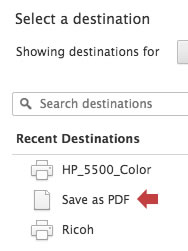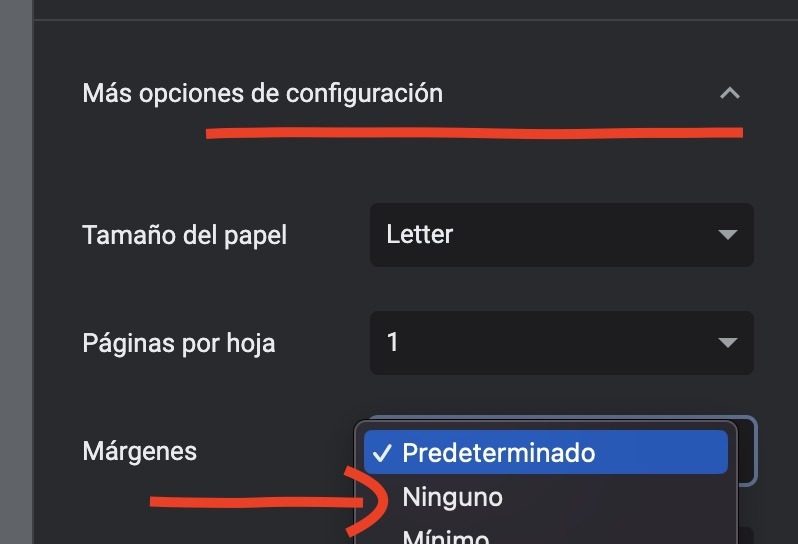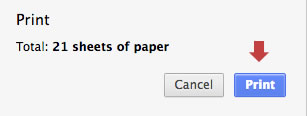English 3 Unit 3 Term 1 Week 2, 2025
Instrucciones:
• Los bloques sombreados en color gris se pueden ocultar en la impresión final.
• Para ello haga clic sobre cada uno de los bloques que desea ocultar.
• Para encenderlo nuevamente, pulse el bloque otra vez.
• Solamente los bloques encendidos serán impresos.
• Pulse el botón «Imprimir» cuando se encuentre listo.
• Para un mayor aprovechamiento del espacio, recomendamos eliminar los márgenes al imprimir.
¿Cómo guardar PDF?

Recomendamos utilizar el navegador Google Chrome.
Si no lo tiene instalado en su dispositivo puede descargarlo aquí.
El diálogo de impresión iniciará en cuanto cierre estas instrucciones.
En el cuadro de diálogo, cambie el destino de la impresión:

En las opciones, seleccione «Guardar como PDF»:

Para aprovechar todo el espacio de su hoja, recomendamos desactivar los márgenes:

Por último pulse el botón «Guardar»:

¿Cómo imprimir en color?

Recomendamos utilizar el navegador Google Chrome.
Si no lo tiene instalado en su dispositivo puede descargarlo aquí.
El diálogo de impresión iniciará en cuanto cierre estas instrucciones.
En el cuadro de diálogo de la impresión siga las siguientes instrucciones:
Si desea imprimir el planeamiento a color, asegúrese de activar la opción «Color»:

En la sección «Más configuraciones»:

Active la opción «Gráficos de fondo»:

Finalmente pulse el botón «Imprimir»:

School year: 2025
Period:
Term: I
Level: Third Grade
Unit: 3
Week: 2
Domain: Socio-interpersonal
Scenario: May I help you?
Theme: Going to a store!
Enduring Understanding: People provide good and services to meet the needs of my community.
Essential Question: How do people in my community meet their needs?
General Competences:
Responsible Citizenship ( )
Life Competences ( X )
Competences for Employability ( )
Learn to Know
Grammar & Sentence Frames
Modal: can
- Can I help you?
- Can I have a pair of shoes, please
- Can I get a coffee?
Phonemic Awareness
- Common prefixes, suffixes and roots including the endings -tion, -sion.
Vocabulary
Going to a store!
Offering help
- Can I help you?
- How can I help you?
Asking for something
- (Hello) Can I have … please?
Verbs Actions
Buy, sell, pay, cost, help, look for, eat, serve
Learn to Do
Function
- Naming goods and services in the community.
Discourse Markers
- The cake is delicious but the food not.
Learn to Be and Live in Community
Psycho-social
- Expressing appreciation and gratitude towards community helpers
Socio-cultural
idioms/ phrases
- Interacting using social phrases, manners and personal space. (“Please” “Thank you” and “Excuse me”.)
- Can I help you?
Assessment Strategies & Evidences of learning
Learner…
Goals
Learner can…
Pedagogical Mediation/ Didactic Sequence
Pre-teaching
Warm Up
Learners listen and read a picture story called People in our town in this link:
Then, the teacher can ask learners to relate places and services shown in the video with the ones they have in their communities.
Activation of prior knowledge
- Teacher have learners to watch a video named In a shop in the following link:
https://www.youtube.com/watch?v=dyn62IQI1zo
Teacher asks learners read and repeat key phrases need to get things from those places.
Modeling
Begin by introducing the topic of goods and services.
Explain to the students that they will explore how these two concepts differ and relate by creating a word network that links various ideas.
Play the video where the teacher models goods and services using a list and a word network.
 Ask students to pay close attention to how the terms are connected and how the ideas are organized.
Ask students to pay close attention to how the terms are connected and how the ideas are organized.
The teacher demonstrates sentence frames to help name goods and services in the community.
Write and explain sample sentences on the board, such as:
-
- «This is a store. In a store you can buy a shirt.»
- «This is a school. In a school you can study.»
- «This is a shoe store. In a shoe store you can buy tennis shoes.»
Emphasize how these sentence frames can be used to describe various community establishments and their functions.
Time
Assessment Strategies & Evidences of learning
R.2.Shows understanding and enjoyment of text heard or read sequencing pictures
rrr
Goals
Learner can…
R.2.comprehend readings and enjoy texts.
Pedagogical Mediation/ Didactic Sequence
Clarifying
The teacher pastes pictures of different places in town on one side of the board, and in the other side there will be goods and services. What learners will have to do is to match them. Once a student matches pics, he/she has to say a sentence such as: This is a store. In a store you can buy a shirt.
Task-rehearsal
The teacher reads the text one first time so students can identify the different community helpers.
Community helpers in my city
The community helpers work in the city. Community helpers work to help the community.
A police officer keeps people safe.
Firefighters help people at accidents and house fires. A paramedic cares for people and take them to a hospital.
Doctors, nurses, and dentists help people stay healthy.
A veterinarian helps keep your pet healthy.
Every house has trash that is picked up by sanitation workers.
Mail carriers and others deliver letters.
Bus drivers and take people places.
Farmers grow crops for everyone.
A grocery clerk works in a supermarket putting food items on a shelf.
A construction worker builds new offices and houses.
A baker makes bread.
Task completion
The teacher reads the text slowly giving the students the chance to choose the correct picture and paste it in the correct space.
The teacher checks the order of the pictures.
Task assessment
The teacher reads the text one more time.
The students complete the questions in the extra sheet about the reading.
1) Who helps sick people?
- Doctor
- Firefighter
2) Who helps clean the community?
- Doctor
- Sanitation worker
3) Who makes bread?
- Baker
- Dentist
4) Who takes people to the hospital?
- Firefighters
- Paramedic
5) Who builds houses?
- Police officer
- Construction worker
6) Who helps the pets?
- Nurse
- Veterinarian


